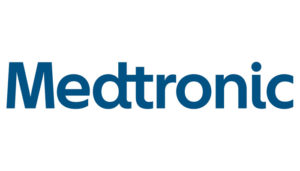Medical device and MedTech insights, news, tips and more
Inside the Largest Medical Device Acquisition in History
November 4, 2016

 In June 2014, Medtronic and Covidien shook the medical technology industry with the announcement of a merger of unprecedented scale. OCTANe’s Medical Investor Forum, held in Irvine, Calif., Oct. 27-28, featured a conversation between Geoff Martha, who led Medtronic’s team for the $50 billion merger, and Brett Wall, former president of Covidien and current president of the Neurovascular business at Medtronic. The pair provided an inside look at the deal, how it happened, and what they would have done differently. For the most part, in keeping with OCTANe’s conference model, Wall acted as the interviewer.
In June 2014, Medtronic and Covidien shook the medical technology industry with the announcement of a merger of unprecedented scale. OCTANe’s Medical Investor Forum, held in Irvine, Calif., Oct. 27-28, featured a conversation between Geoff Martha, who led Medtronic’s team for the $50 billion merger, and Brett Wall, former president of Covidien and current president of the Neurovascular business at Medtronic. The pair provided an inside look at the deal, how it happened, and what they would have done differently. For the most part, in keeping with OCTANe’s conference model, Wall acted as the interviewer.
Medtronic was 3 years into the leadership of Omar Ishrak and looking at what was coming down the pipeline, Martha explained. There were issues in the healthcare space, particularly in costs and meeting the needs of providers, payers, and government, that Medtronic leaders felt it couldn’t solve with its current model.
That model was still very transactional, Martha said, “and we wanted to get at something much deeper in terms of meeting patient needs.” In addition, the company knew it needed more expertise, breadth and depth for globalization. “If you are thinking to build infrastructure in China, for example, scale matters,” he said.
Medtronic needed partner that would help it further engage with providers, payers, and, most importantly, patients.
“We were known for organic growth and strategic deals, but we needed to do something big,” Martha said.
Martha approached Medtronic’s board and began laying out the possibilities of making an acquisition of a large medical company that would provide the needed breadth. “The board had started to warm to the idea, but we hadn’t settled on anything.” Covidien, he noted, was on the top of the list.
Then one day, Covidien CEO Joe Almeida called Ishrak and said he was going to be in the area and wanted to go to dinner.
Covidien had done its own analysis, Martha said, after making a commitment to its stakeholders to double its enterprise value performance before the year was out. To do that with unique tech or organic growth would be extremely difficult and take too long, so Almeida presented Ishrak with an option to purchase Covidien.
“We were a little surprised at how fast it went,” said Martha. “Getting the deal through our internal process took only a few months, from April 2014 to June 2014. There were only 6 people involved until the signing.”
After that, Martha says, it got more complicated. Another surprise was the different stakeholders that needed information. “It was really important to have a clear, consistent, and constant message. We had to hire a special PR team to help handle the press, retail investors, and even employees.”
The big mistake
“The tax inversion issue was my one regret,” Martha recalled. “It was one thing we didn’t anticipate. The team had the technology strategy and the business strategies laid out and those, Martha said, went fairly smoothly. Tax inversion, however, became a far larger issue.
Inversion was a second-tier strategy that would give Medtronic access to cash earned outside the U.S. Martha said company leaders knew the government wouldn’t like it, but they underestimated the level of objection. “When the Treasury Dept. told us it was illegal, we had to make our case. We should have checked in with key senators and the Obama administration, and explained our position earlier. Once we did explain, it dramatically changed the tone and tenor of the conversation.”
Martha said the mistake shook the core of leadership and made them question everything. “The only way were able to keep going was because of our trust in each other and the teams.”
The heart of the deal
For everyone involved, and the most important issue for Martha, was that the deal be treated as a merger of equals.
“It was almost like Noah’s Ark,” he said. “We had two talented, functional teams and a lot of overlap.” The exceptions to the rule were R&D and sales. “We were able to keep both of those teams completely.”
Martha said he thinks they took Medtronic and Covidien employees by surprise, however, by announcing that every job was up for discussion. “We were looking for ambassador behavior and we had a lot of respect for both teams.” For the transition, leadership said it would be making staffing decisions on a case-by-case basis. “To be frank, we didn’t want people who took their positions for granted. That kind of attitude can be a poison.”
“The biggest day we had was the first day,” says Wall. Instead of making big announcements, Medtronic’s leadership presented “Mission Day,” where it broke into groups and talked about the Medtronic mission statement. “That first day was a day of reflection and contemplative thought,” says Wall.
“We knew we wanted to retain the Medtronic name and the mission,” says Martha. “What we really cared about was sharing that sense of purpose.”
Source: Inside the largest medical device acquisition in history | Medical Design and Outsourcing
Author: Heather Thompson
